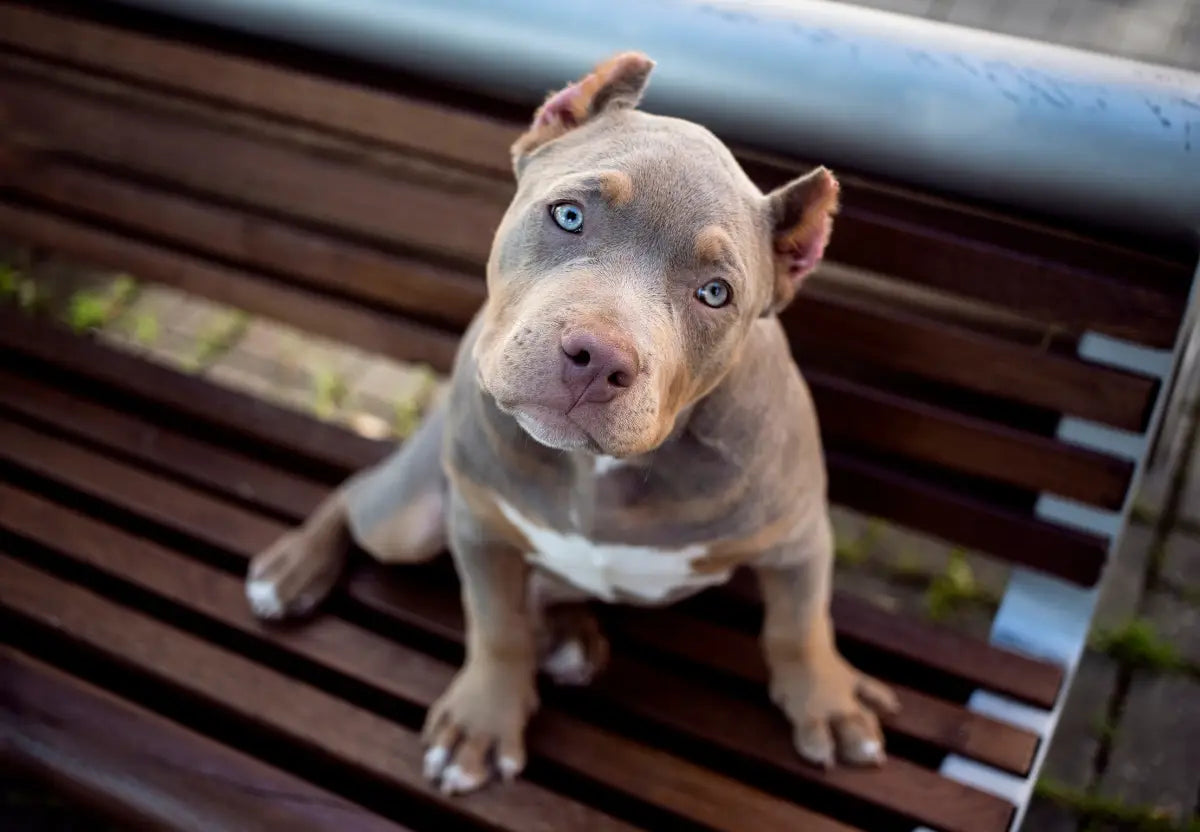Because of their name and muscular build, American Bullies often are subject to assumptions, misinformation, or fear. But many myths distort what this breed is truly about. In this article, we’ll confront common misconceptions, present evidence-based truths, and help owners, prospective buyers, and the public understand the real temperament of the American Bully.

Myth 1: “Bullies are inherently aggressive / dangerous”
Truth: Breed alone does not determine aggression. Temperament depends heavily on genetics, socialization, training, environment, and owner behavior. Many American Bully profiles emphasize companionship, loyalty, and friendliness. DogTime+2DogAcademy.org+2 These dogs were developed for companionship, not aggression, and many exhibit a “soft, sweet disposition.” BetterPet+1 Poor breeding, neglect, abuse, or improper training are far more likely to produce behavioral issues than inherent violent temperament.
Myth 2: “They’re ‘pit bulls,’ and thus dangerous”
Truth: While American Bullies share some ancestry with Pit Bull-type breeds, they are a distinct, modern breed with their own standards and traits. Wikipedia+2DogAcademy.org+2 Labeling them simply as “pit bulls” oversimplifies and miscasts their temperament. Many registered Bully breeders emphasize calmness and control in temperament over brute strength.
Myth 3: “Bullies are bad with children / other pets”
Truth: When properly socialized early and treated well, many Bullies are highly affectionate with children and get along well with other animals. Rover.com+2Off Leash Blog+2 The key is supervised introduction, solid training, and positive reinforcement. As with all breeds, every dog is an individual—some will be more sociable, others more reserved.

Myth 4: “Bullies are not smart / are stubborn”
Truth: American Bullies are generally quite trainable and eager to please. DogAcademy.org+2DogTime+2 Their physical strength sometimes masks their pliability—trainers note that consistent, reward-based training works better than dominance or force.
Myth 5: “Bullies require extreme exercise”
Truth: While those with high energy levels benefit from exercise, most American Bullies thrive with moderate amounts. Overexertion or extreme performance demands (especially in pups with open growth plates) can create joint issues. A balanced mix of activity, rest, and mental stimulation is ideal.
What Does Research and Breed Evidence Show?
-
The United Kennel Club (UKC) standard emphasizes a temperament that is “gentle, with stable and confident behavior.” Wikipedia
-
Breed profiles frequently describe Bullies as affectionate, loyal, companion-focused. Rover.com+2Bailey's CBD+2
-
Anecdotal and community owner experiences highlight their goofy, friendly, and sociable traits (so long as they’re raised in a nurturing environment).
-
One Reddit comment summarizes relevant nutritional & structural advice (though not temperament per se):
“The bones and muscles on these dogs grow quicker than the ligaments do … avoid any jumping on or off objects … limit her activity on slippery surfaces” Reddit
All this suggests that temperament is not preordained; it’s molded.

Key Factors That Influence Temperament
-
Breeding / genetics
Responsible breeders prioritize stable, confident temperaments over extreme looks. -
Early socialization
Exposure to people, sounds, other animals before ~16 weeks helps build confidence and reduces fear responses. -
Training method
Positive reinforcement works better than punishment-based training. Consistency, structure, patience. -
Environment & handling
Treatment from people, consistency in rules, and mental enrichment all shape behavior. -
Health & comfort
Undiagnosed pain, joint issues, or skin problems can make a dog irritable or reactive.
Behavioral Red Flags (When Myths Reflect Real Issues)
If a Bully shows signs of fear aggression, guarding, or reactivity, it’s often linked to:
-
Lack of socialization
-
Negative past experiences or trauma
-
Inconsistent or harsh training
-
Genetic predispositions from irresponsible breeding
-
Physical pain or discomfort
If you see concerning behaviors (growling, lunging, stiff posture), consult a certified behaviorist or vet rather than relying on breed stereotypes.

Talking to Friends, Neighbors, or Skeptics
If someone expresses fear:
-
Explain that temperament is not predestined by looks.
-
Share real stories or profiles of well-mannered Bullies.
-
Invite them to a calm meet-and-greet under controlled settings.
-
Emphasize responsible ownership: socialization, training, proper care.
Final Thoughts
The American Bully is not a “dangerous animal waiting to happen.” It is a living being whose personality and behavior reflect how it is raised, handled, and trained. Debunking myths helps fight prejudice, promotes responsible ownership, and allows these dogs to shine for the affectionate, loyal companions they often are.












